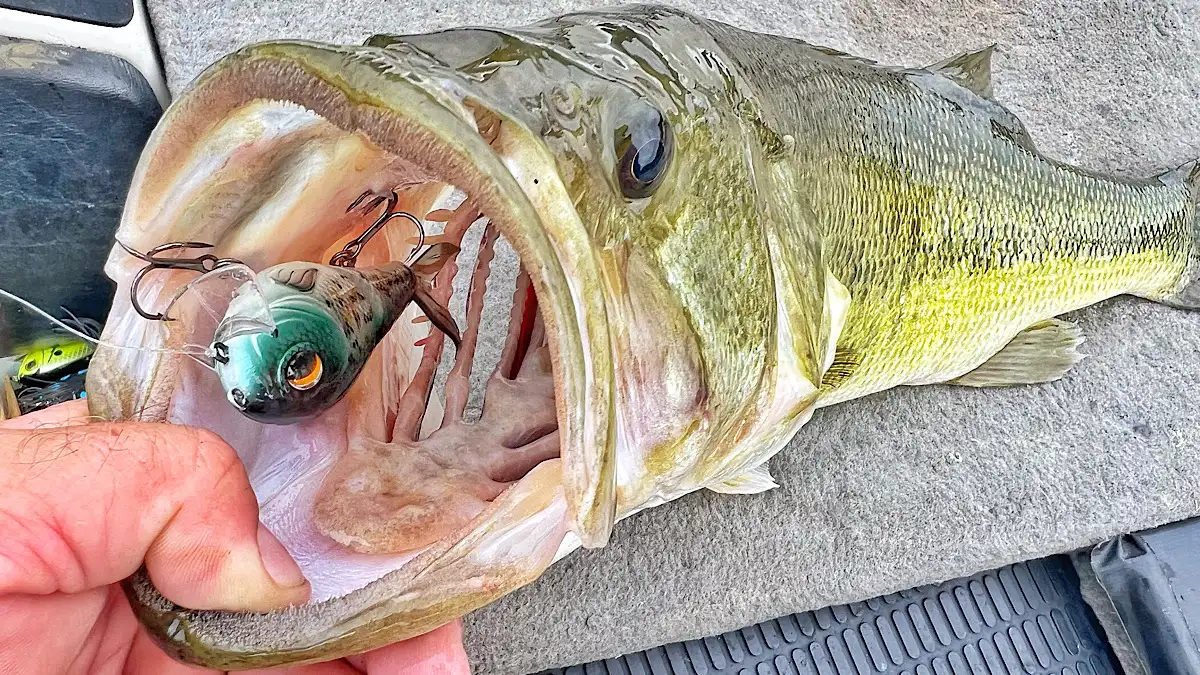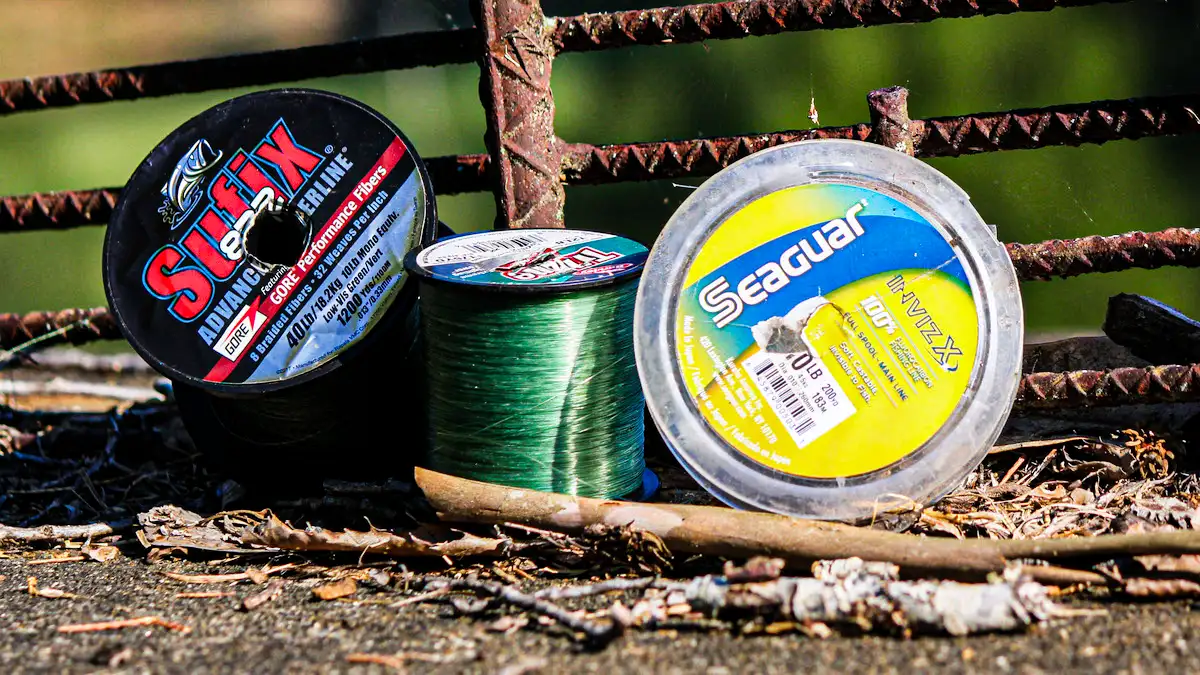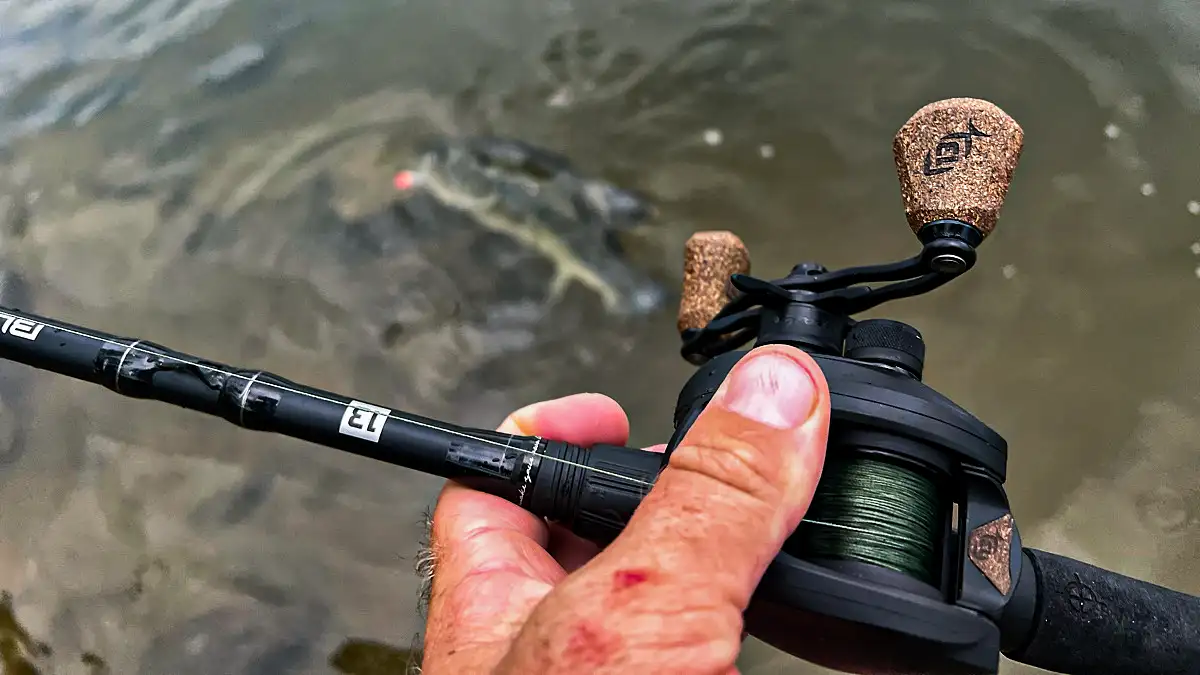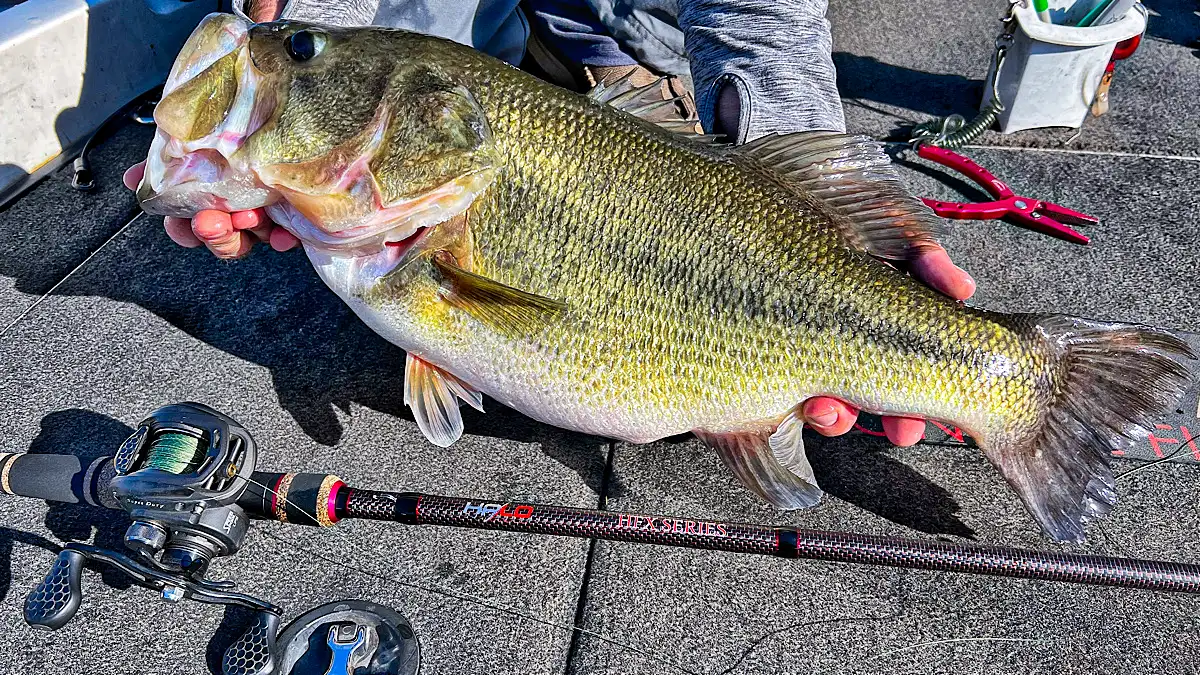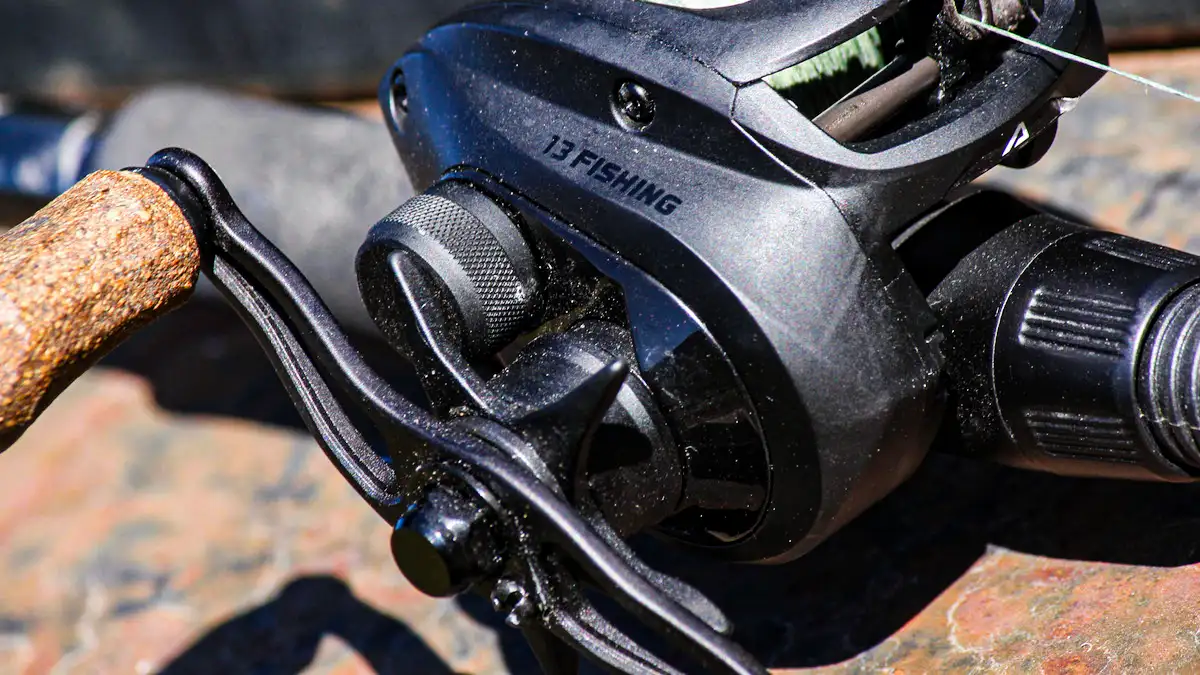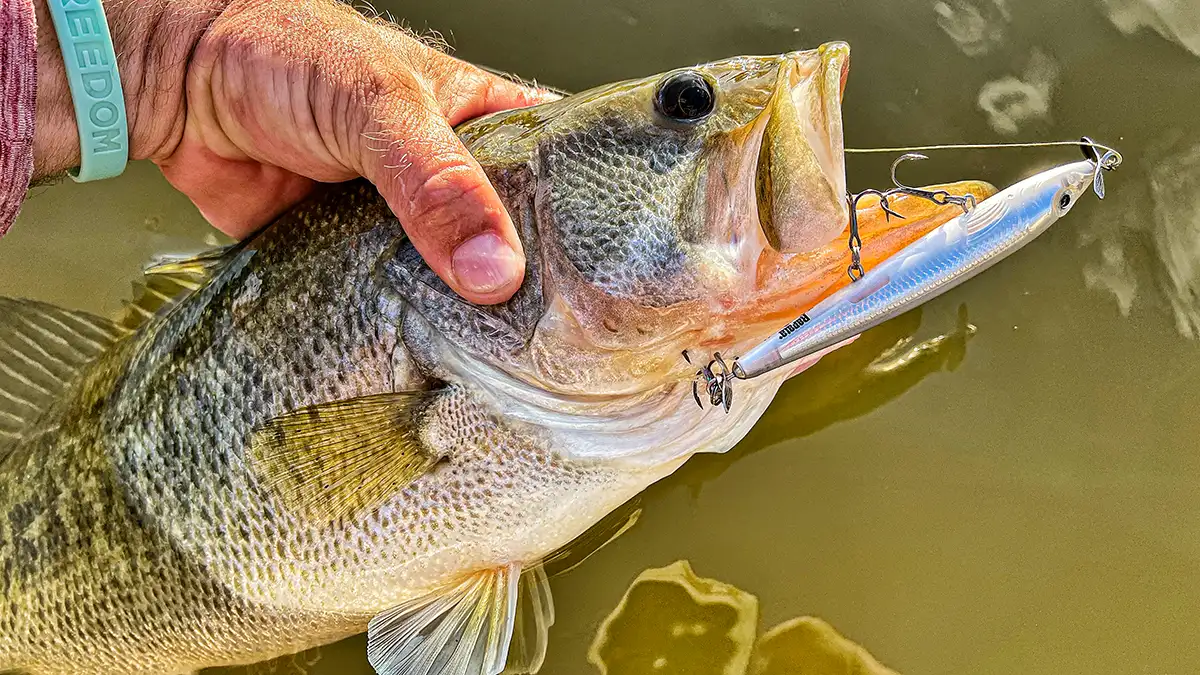When it comes to topwater fishing, there can be an overwhelming amount of details to consider. Everything from a 2-inch finesse popper to a 10-ounce wake bait is technically considered a topwater, with even those two baits not encompassing the whole genre. So, how do you know what to use when? And perhaps more importantly, how do you choose your topwater bass fishing gear for each type of lure.
Well, we previously broke off at least one digestible chunk of that first question when we talked about the best topwater lures for bass.
Today, we’re going to do our best to answer that second question—what gear should we use with each topwater lure? We’re going to do our best to give you solid line, rod and reel recommendations for any topwater you can imagine.
Which Fishing Line is Best
Though there are a few hybrid line types out there now, three staples have existed for decades: braided line, fluorocarbon and monofilament. Braided and monofilament lines differ in several ways, but they both float, while fluorocarbon sinks. This makes mono and braid the only truly viable options for lures fished on top of the water.
While ruling out fluoro is easy, deciding which baits to use with braid and which to use with mono can be a little more challenging. The truth of the matter is, several topwaters can be fished on both of these types of line. But personally, I feel that braided line is best in almost all cases, if you are comfortable fishing with it and can get away with it. I.e. the fish don’t shy away from heavy line.
There are some situations where heavier braided line is an absolute must, like with hollow-bodied frogs, reeling toads and buzzbaits. Braid is crucial as well when fishing with large wake baits like wooden rats and big reeling prop baits like Whopper Ploppers and Choppos. These baits all either have large single hooks, big double hooks or treble hooks larger than size No. 2. Braid definitely makes setting a good hook with the bigger hooks on these baits a lot stronger.
With double frog hooks, the braid is needed to get a good hookset. The same is the case for buzzbaits and toads. These baits have bigger, bolder hooks which require more force to penetrate into fish, and they are often fished in and around heavy cover. Braided line also allows an angler to cast a bait a great deal farther, which again is an essential part of fishing frogs, reeling prop baits and big wake baits. All of these things increase the need for braided line.
Monofilament versus braid
Monofilament again floats like braid, but that’s where the similarities stop. Mono is relatively transparent where braid is highly visible, and mono has far more stretch than braided line. However, mono is easier to use for for novice anglers and far less expensive. So, it can be a useful line for topwater fishing, especially for anglers just getting into bass fishing.
The added stretch on mono also takes some of the guess work out of selecting the right rod and fine tuning the settings on your reel, which are necessities with braided line. But we’ll get more into that conversation shortly.
The main takeaway is that monofilament is a perfectly fine line for to use with a wide variety of treble hooked topwater baits, perhaps even a buzzbait. And there is even one scenario when I’d recommend mono for the more advanced anglers, and that is when fishing a treble hooked topwater like a popper in close quarters. In this situation, the stretch of the mono could help prevent a short-striking fish from tearing off or bending the thin wire treble hooks.
Ultimately though, the benefits of braided line are almost always worth laboring through the learning curve and spending a few more dollars on line.
Casting is really the biggest reason. Because braid has a much smaller diameter as compared to the same pound test in monofilament, you can get a lot more braided line on your reel, giving you more range. And the smaller diameter braid gives it superior castability and distance over monofilament.
The castability of braid doubles or even triples the range of baits when compared to fishing them on mono. But what you gain in range, you give up in stretch. And you have to be very aware of this when fishing with smaller treble hook baits, as the lack of stretch in the braid can again lead to bent hooks and lost fish. To account for this low stretch, you simply need to select a slightly lighter-action rod and back off your drag a little. We’ll dive more into this before we are done.
But first, there’s one last thing worth noting when it comes to braid versus mono with topwaters. A double-prop, twitch-style bait actually works best when using braid and mono in unison. Braided line is necessary, because it allows you to cast the prop bait farther and get a better hookup if you get a bite on the end of the cast.
But there’s a downside; the limp braid can tangle in the front prop. Incorporating a 6-inch leader of stiffer monofilament between the line tie and the braid will prevent this, while still allowing you to take advantage of the benefits of braid.
Rod and line selection for any bait
If you don’t feel comfortable fishing with braid, or for whatever other reason opt for monofilament, 15-pound test mono is a great place to start. It’s an effective line to fish with almost all small- to mid-sized treble hooked topwaters like Spooks and poppers. You might need to step up to 17- or even 20-pound test mono with some bigger baits. But the larger line will negatively impact the castability of the baits. And again, there are some baits situations in which mono simply doesn’t work.
When it comes to the most versatile line size and type for topwater fishing, you can do a lot with 30-pound braided line. I probably own 50 different types and brands of topwaters. I could confidently fish 90% of them on 30-pound braided line.
This is a great line size for most poppers, walking style topwaters, buzzbaits, prop baits and toads, as well as small- to mid-size Choppos, Whopper Ploppers and wakebaits. Basically, 30-pound test braided line is plenty strong enough for any type of topwater fishing, except when fishing in super heavy cover or when using really large baits.
In these situations, I’ll move up to 40-, 50- or even 65- pound braid.
Sticking with braid for the remainder of this conversation, we’ll talk about selecting rods now, and how to tailor these selections to the baits and the braided line. Any topwater with treble hooks smaller than size No. 2 will typically work well on a 7-foot medium casting rod.
You can step down to a sub-7-footer with a small popper if you’d like, or step up your rod selection to a 7-0 medium heavy for something like a Spook. Maybe even go as far as a 7-3 medium heavy for a size 110 Whopper Plopper for instance, before reaching that tipping point of a No. 2 size treble hook.
Picking up there, medium-heavy rods work well with heavier treble hook baits like big wake baits, large walking topwaters and large reeling prop baits. Again, essentially anything with treble hooks larger than size No. 2.
Select the length of the rod based on the size of the bait, ranging from 7-0 to 7-6 or so, with a few massive baits like wood rats and Lunker Punkers perhaps requiring something a little longer.
For hollow body frogs, toads and buzzbaits, you’ll want to toe the line between a medium heavy and heavy action rod from 7 to about 7-6, adjusting this time to a larger, stiffer rod based on the type of cover you’re fishing around. When frogging for example, in open water a 7-0 medium heavy rod with 30- pound braid is sufficient.
But when fishing a frog over thick matted vegetation, you’ll need to up your rod and line size significantly, going with a 7-6 heavy action rod and 65-pound braid.
Reel selection and tuning for topwaters
The reel selection is perhaps the simplest part. Something in the 7:1 gear ratio range will work well with most all topwater baits. You’ll never need anything slower for a topwater. But you may want to step up to something in the 8:0 range when fishing with reeling prop baits, like Whopper Ploppers and Choppos, or when targeting schooling fish.
Though a 7:1 will sill work, it’s very beneficial to fish with a faster reel when the bass are schooling. If you’re mid-cast and the bass come up schooling in a different direction, you can burn your bait in quicker with a faster reel and then target the newly surfacing bass.
As we mentioned a few times already, adjusting your drag is very important when fishing with braid. You don’t want to really tighten your drag all the way down, unless you’re fishing with a hollow body frog. Even with toads, buzzbaits and larger treble hooked baits, you want your drag to be able to slip a little, especially as a hooked fish nears the boat.
And it’s very important for your drag to be able to slip a little on smaller treble hook baits, so that the bass can fight without tearing free or bending the hooks. You may even need to back off the drag slightly the closer the fish gets to the boat, and then tighten your drag back down a little before the next cast, to ensure a good hookset should you get bit at the end of an upcoming cast.
Fine tuning the braking system and the spool tension knob can be a little tricky. To keep it simple, set the brake to about 50%, and tighten the spool tension knob down. Start backing off of the spool tension knob little by little each cast, increasing your range slowly. As you dial each bait in, you will be able to maximize your casting distance while still minimizing the risk of an irreversible backlash.
Final thoughts on topwater fishing gear
Obviously, this was a lot. And perhaps we bit off a little more than we could chew trying to talk about the right gear for all topwaters all at once. But here are a few simple takeaways to leave you with. Most topwaters can be fished with a 7-foot medium heavy rod, a 7:1 gear ratio reel and 30-pound braided line. If you establish this as your base line, you can go bigger and stronger with larger baits, and backoff a little with smaller baits.
If you’re new to braid, it’s best to go ahead and take the time needed to learn how to use it. Fine tune your reel slowly to increase your range. And make sure your drag isn’t set too tight. Don’t get too bogged down in the details. Fishing is supposed to be fun. And topwater fishing is the most fun. Return to this piece from time to time and hopefully you’ll be able to mine a few new nuggets to take back out on the water for your next trip, becoming better in time at selecting the right gear for any topwater.


